Shop
Our Covered Gloves allows for the full range of motion for each finger which helps you to handle any weapon more easily, but without sacrificing protection. The inner layer of the gloves is covered with protective paint and is partly fastened with natural leather. The leather gloves in the interior provide excellent weapon-grip and the
Our Maximilian Breastplate is forged into a shallow globose form with three sprays of fluting radiating from the waist. There are seven fluting lines in the center spray and 5 in each of the side sprays. The outermost fluting on each of the side sprays is a single sided fluting, more akin to a step.
Medieval breastplate armor with a decorative V-shaped rib Churburg Castle offers a lot of excellent examples of the finest medieval armor. It was founded in 1253-1259 by Henry de Montfort, who was a bishop of Chur. The name of the castle comes from the name of rank of this medieval noble. The castle is located
In the second part of the XVI century the effectiveness of gunpowder increased. Consequently, the armories that produced firearms began to prevail over those that produced armor. There was a need to strengthen armor, especially that of the chest, against bullets. This led heavier and heavier armor. These modifications prompted the knights to refuse less
Great Helm also known as Tophelm was worn upon the bascinet and chainmail hood. The historical artifact of our Great Helm Bolzano was found in Bolzano/Bozen, region: Trentino-Alto Adige/Südtirol, Italy. Dated by 1300 year. Apparently it was made in Germany. We can presume that the helmet was owned by a knight who belonged to the
The Cuirass – a common name for armor consisting of one or more whole interconnected metal plates to protect the torso. This is our version of a typical cuirass from Western Europe in the XVI century. It’s forged from 1.5mm cold rolled steel. The base model includes: a matte polish, steel rivets, and steel factory-produced
Armets first appeared in the XV century and saw widespread use across Europe in countries such as Italy, Spain, France, and England. It is a fully enclosing helmet and has multiple articulation points in the visor, allowing for different levels of “openness”. Also of note is the tapering of the form at the neck, which
Transitional sallet represents the type of late XV – beginning of XVI century helmet. At the end of the XV century the shape of dome and visor of salled changed according to battle requirements and aesthetic of the new epoch. Therefore Sallet with chin protection was transformed into Close Helmet and Armet. Our Transitional Sallet
Cylindrical shaped helmets appeared starting in approximately 1180. Often dubbed great helms or tophelms, they were in use from the middle of the XII until the XIV century. Tophelms were made to fit closely to the head of knight and some of them even had proto visor that could be opened like a small door,
The Byzantine Empire covered the period spanning Late Antiquity until the Middle Ages: roughly 395–1453. Thanks to the Migration Period, the Early Middle Ages’ armor included different styles and types. The most common type of helmet of that time was a helm composed of segments which are affixed to a wide metal ring. This manner


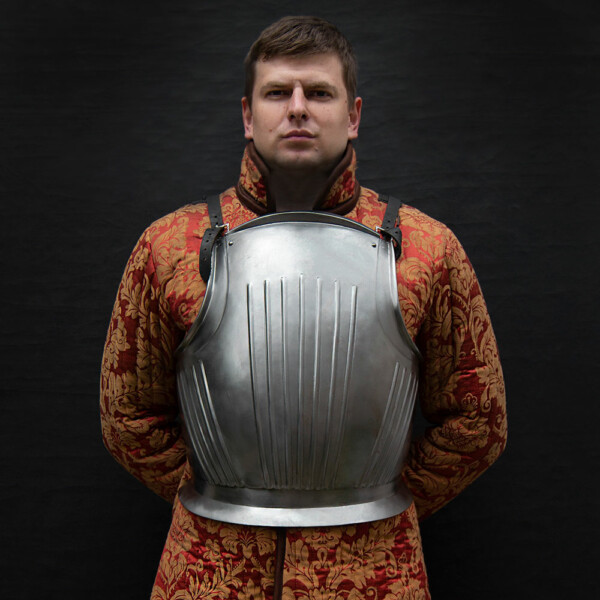
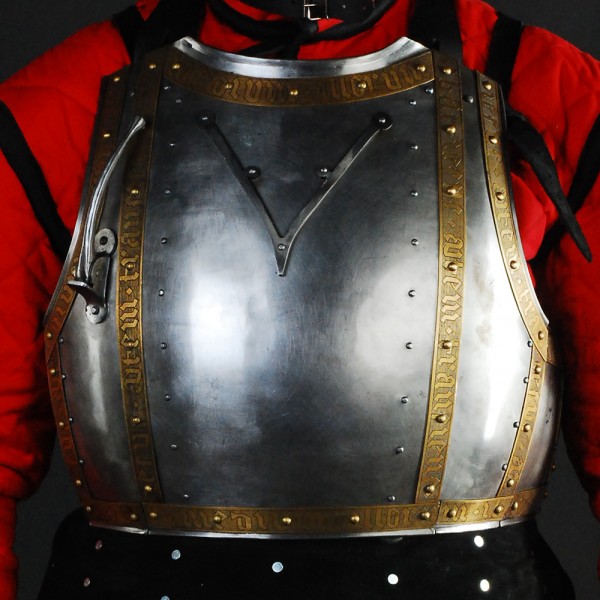




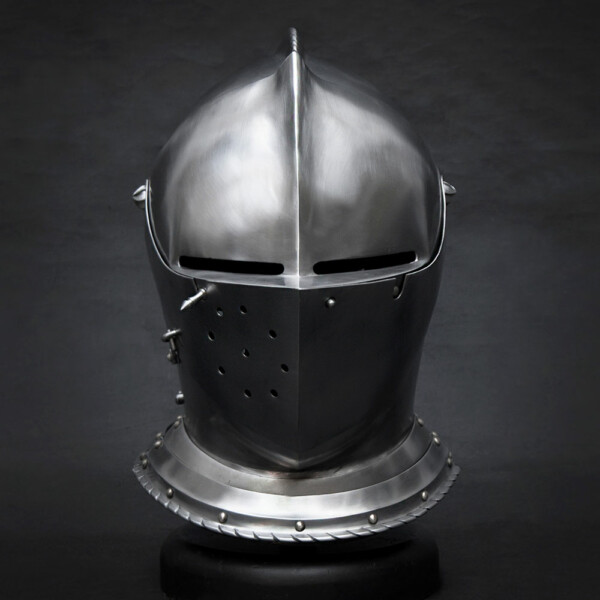
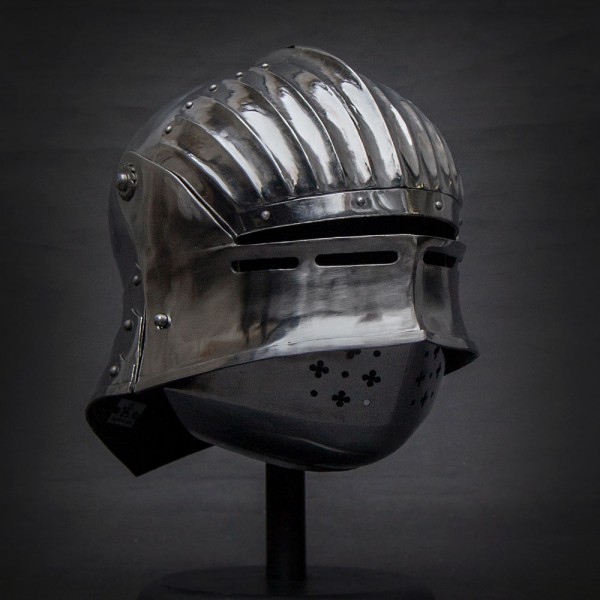
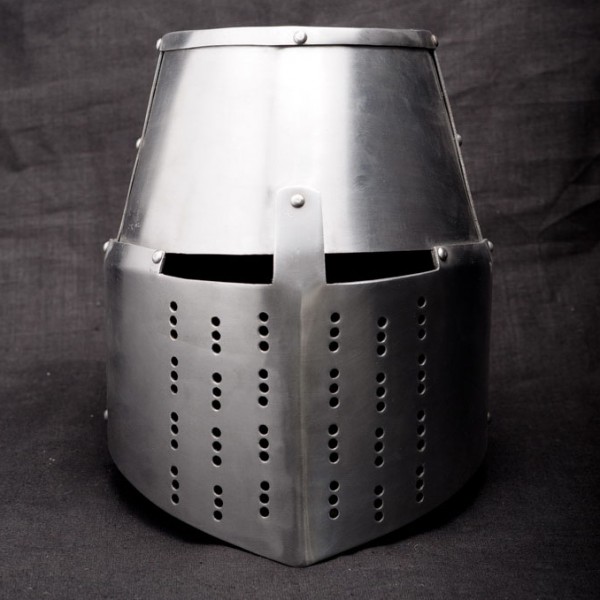
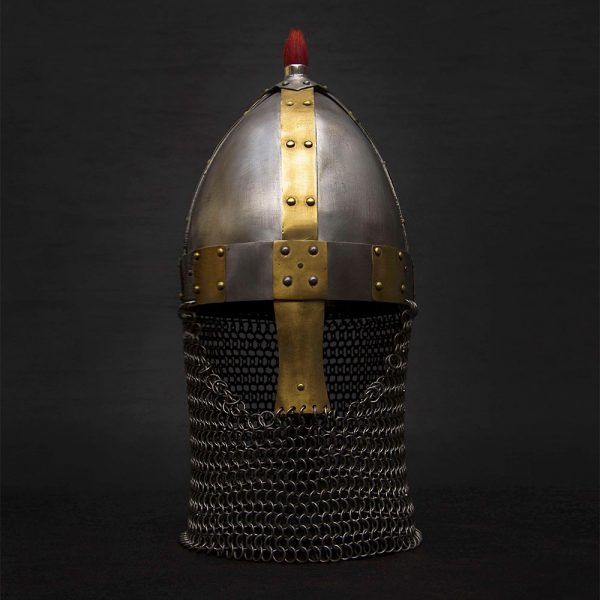
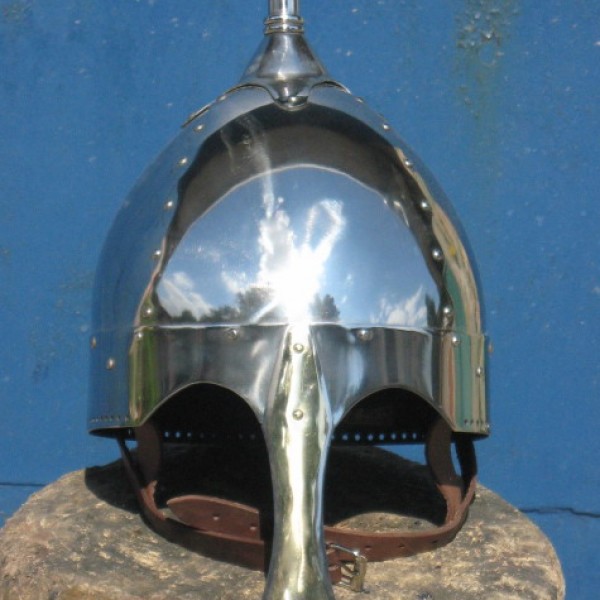
 Shop
Shop